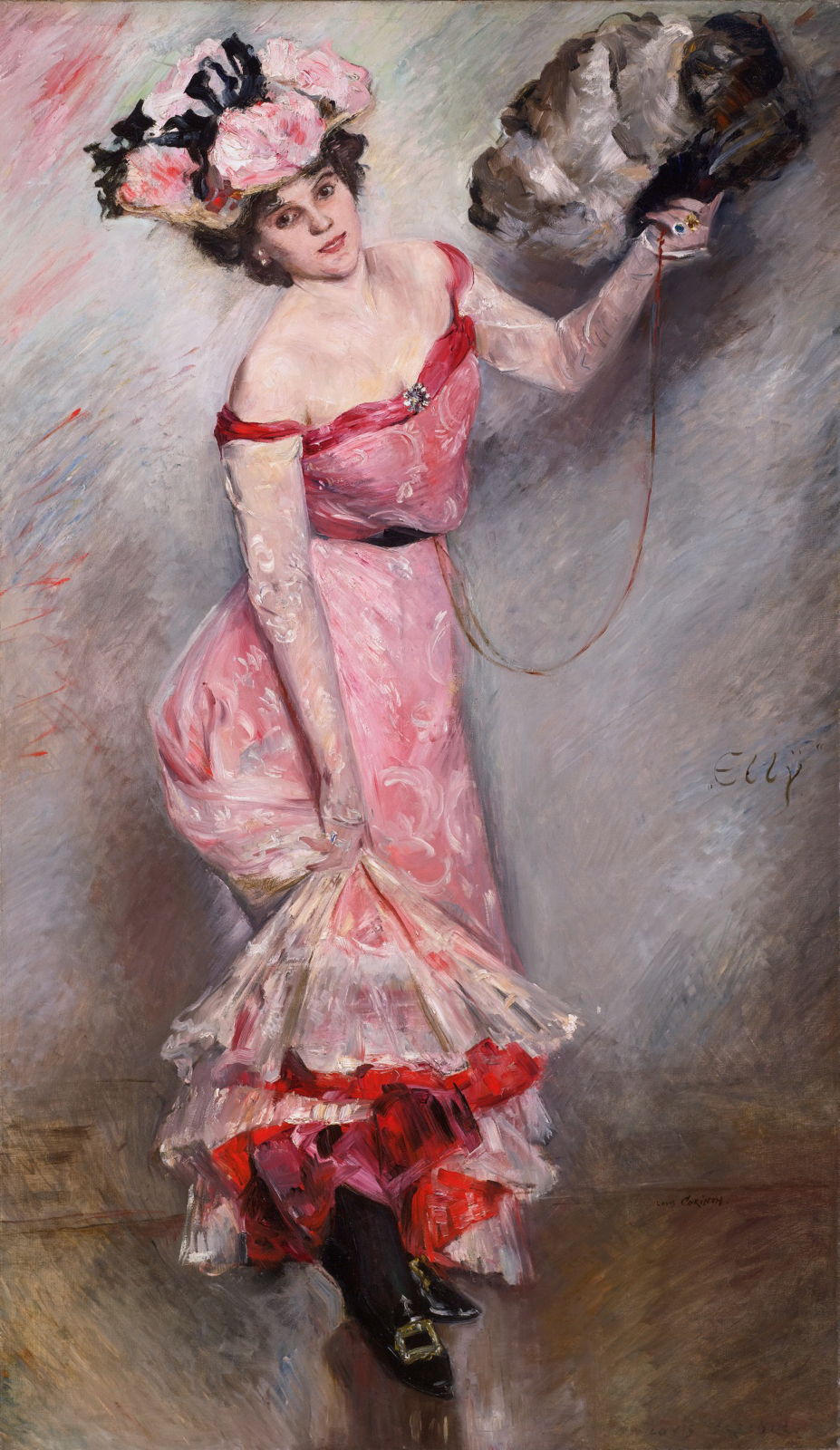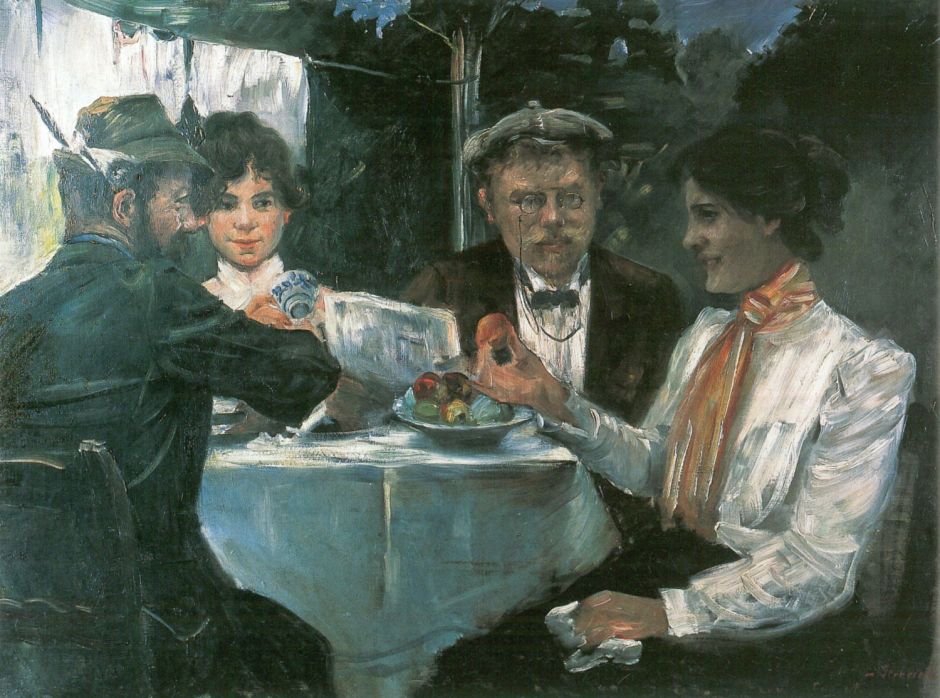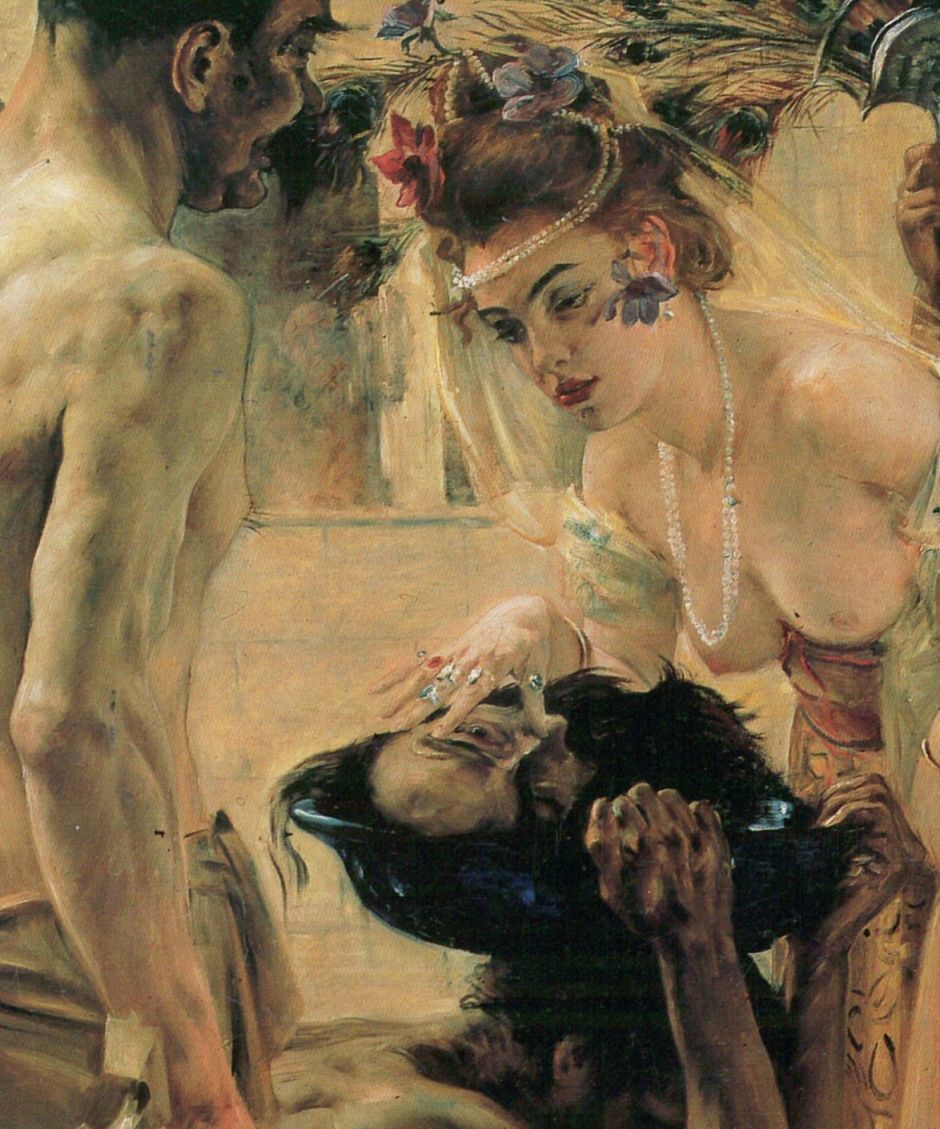Lovis Corinth didn’t just spend his time in Munich drinking red wine and champagne, but experimented in his painting and evolved his mature style. In 1897, he moved studio within Munich, and started to make increasingly frequent visits to Berlin, where he was able to obtain lucrative commissions for portraits. When the Berlin Secession was founded in 1898, Corinth was among its members. By 1900, he was renting a studio in Berlin, and in the autumn of 1901, he closed his studio in Munich and moved to Berlin.

He had no shortage of attractive young women, like Ellÿ (1898), to paint. But he pressed on with his campaign to improve his style and technique.

Reclining Nude (1899) is usually considered to mark the peak of Corinth’s nudes, and was painted during one of his visits to Berlin. Its brushwork is so painterly that it has sometimes been mistakenly supposed that it was made well into the twentieth century, but is now securely dated to the end of his time in Munich.

Morgens (Morning) (1900) shows another very modern nude, in personal and intimate surroundings.

In Max Halbe’s Garden (1899) shows a group of friends in a very informal setting, chatting as they eat fruit next to the washing line. Max Halbe (1865-1944) was a German playwright with a growing reputation at the time, and is seen to the right of centre, with his wife at the right.

Portrait of Mother Rosenhagen (1899) shows, I think, the mother of one of Corinth’s friends in Munich.

In addition to single-person portraits, Corinth was commissioned to paint a few group portraits, including this of Die Logenbrüder (The Lodge Brothers) (1898-99). He modelled this after Rembrandt’s smaller group portraits, placing the Master of the Lodge in the centre, where his gaunt face stares up to the heavens.
In these last few years in Munich, Corinth worked on a series of two paintings which explored the story of Salome and John the Baptist’s execution. He seems to have started this work with a drawing in 1897, which eventually led to one of his greatest paintings.
The narrative is biblical, and straightforward. The unnamed daughter (subsequently identified as Salome) of Herodias performed a dance at a birthday feast thrown by King Herod. The dance so pleased Herod that he offered her anything that she wanted, up to half his kingdom. She asked not for riches, but for the head of Saint John the Baptist, the earthly messenger sent to announce the birth and ministry of Jesus Christ. Reluctantly, Herod agreed, John was beheaded in prison, and his head brought to her on a plate; the dancer gave the head to her mother.
A very popular story for religious paintings, Corinth decided to paint the scene close to that most commonly chosen, in which John’s head has been brought to Salome on a platter. This contrasts with the choices of Gustave Moreau almost twenty-five years earlier, which I discussed in yesterday’s article here.
The basic cast and arrangement of figures is the same in each: the severed head of John the Baptist is at the centre, Salome leaning over and touching it with her right hand. Behind her are two women. The receptacle containing John’s head is itself on the head of a slave, who kneels at the feet of the executioner, who stands holding the bloodied sword in his right hand. He faces Salome. To the lower right, three other figures are partly cropped out: the feet of John’s dead body, and another slave bent over them to look at the head of an older man.

Corinth’s first painting of Salome from 1899 shows the dancer dressed as a tart, her breasts hanging loose, her face sneering down at John’s face with contempt as she touches it. The young woman at the top right laughs as she looks towards the left, apparently detached from the gruesome scene in front of her. No gazes meet, thus the figures do not integrate into a whole.

The second Salome from 1900 is less roughly worked and more finished to show finer detail. Although its figures have not moved, subtle changes have transformed the painting and its reading.
Salome has a more neutral facial expression, and she is staring intently at the lower abdomen of the executioner. Her right hand is stretching open the left eye of John’s head, which appears to be staring up at her. The executioner and the young woman at the top right are laughing at one another, but the third woman beside her has a serious, almost sad expression, as she stands holding a very large peacock fan. Visible at the top of her clothing, directly below her chin, is the small image of a human skull.
Corinth has also added detail to the cropped figures at the lower right. John’s legs are spattered with his blood, and possibly bear wounds or sores from his imprisonment. The two figures there are engaged in eye-to-eye contact, and there is a profusion of hands there too, as the older man appears to be raising John’s right arm.

The chain of gaze here is central to the painting’s narrative: John’s eye stares at Salome, who stares at the executioner’s crotch, who laughs at the young woman at the top right, who laughs back at him. Watching sombre and detached from behind is the figure of death.
Oscar Wilde’s one-act play Salome had been first published in French in 1891, and was soon translated into English and German. Banned from public performance in Britain, it received its premier in Paris in 1896, but was not performed in public in England until 1931. Wilde had been influenced by Gustave Moreau’s paintings of Salome, and in turn influenced both Corinth’s paintings and Richard Strauss’s later opera (1905).
In Salome’s words at the end of Wilde’s play (he calls John the Baptist Jokanaan):
But, wherefore dost thou not look at me Jokanaan? Thine eyes that were so terrible, so full of rage and scorn, are shut now. Wherefore are they shut? Open thine eyes! Lift up thine eyelids, Jokanaan! Wherefore dost thou not look at me? Art thou afraid of me, Jokanaan, that thou wilt not look at me?
If thou hadst looked at me thou hadst loved me. Well I know that thou wouldst have loved me, and the mystery of love is greater that the mystery of death.
At the centre of Wilde’s play is the perversion of lust and desire in Salome, which Corinth captured so well in the chain of gaze. Indeed several commentaries on the play refer explicitly to the role of gaze within it.
This second painting was rejected by the Munich Secession, but welcomed by the Berlin Secession. The result was that Corinth was dubbed ‘the painter of flesh’: his reputation was established, and his future secured in Berlin.
References
Wikipedia.
Wikipedia on Wilde’s play, which curiously does not mention Corinth’s paintings.
Lemoine S et al. (2008) Lovis Corinth, Musée d’Orsay & RMN. ISBN 978 2 711 85400 4. (In French.)
Czymmek G et al. (2010) German Impressionist Landscape Painting, Liebermann-Corinth-Slevogt, Arnoldsche. ISBN 978 3 89790 321 0.

